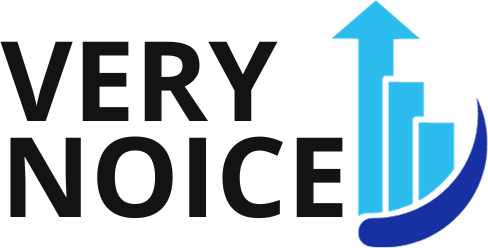- Start saving for retirement early in your career and consistently contribute to your employer’s retirement plan to maximize potential benefits.
- Regularly review and adjust your portfolio to align with shifting financial markets and personal financial goals.
- Utilize tax-advantaged accounts to maximize your retirement savings and minimize tax liabilities.
- Eliminate high-interest debts and stick to a realistic budget that includes all income and expenses to secure your financial future.
When planning for your golden years, making smart financial decisions is essential. From the moment you start your first job to the day you retire, every decision can significantly impact your retirement savings. Whether deciding on the best retirement account, how to maximize your employer’s match, or choosing the most tax-efficient withdrawal strategy, each step forms a critical piece of your financial future. Thus, understanding these elements can guide you toward a comfortable and secure retirement.
Start saving early.
One of the most powerful strategies for securing a financially stable retirement is to start saving early in your career, harnessing the power of compounding to grow your retirement fund. Here are some tips:
Contribute to your employer’s retirement plan.

If your employer offers a retirement plan such as a 401(k) or a 403(b), it’s highly recommended that you contribute to it. Often, employers will match your contributions to a certain percentage of your salary; this is essentially free money you should not pass up.
Moreover, contributions to these plans are often tax-deductible, reducing your taxable income and providing immediate tax savings. As your funds grow tax-deferred over the years, you can accumulate substantial savings for your retirement.
Early withdrawal from these accounts may incur penalties, so it’s best to consider these contributions untouchable until retirement. By diligently investing in your employer’s retirement plan, you secure your future and reap immediate tax benefits.
Invest in diverse assets.
Investing in a diverse range of assets is another key strategy to build a solid retirement fund. While stocks and bonds are common choices for many, non-traditional assets like land estates can also be a prudent investment. Land estates hold intrinsic value and have the potential to appreciate over the years, making them a promising investment option.
For example, purchasing land in an area forecasted for growth could result in significant returns if development increases property values. Also, investing in land estates can provide a hedge against inflation, as property values and the cost of living tend to rise over time.
However, like any investment, buying land comes with its own set of risks and considerations. Thorough research and careful planning are essential; professional advice can be invaluable. Thus, a balanced portfolio with diverse assets such as stocks, bonds, and real estate can help ensure a financially secure retirement.
Regularly review and adjust your portfolio.
Regular portfolio review and adjustment are critical aspects of retirement planning. Financial markets are dynamic and cyclical, and your investment strategy should evolve accordingly. Regular reviews allow you to assess your investments’ performance and ensure that your asset allocation aligns with your financial goals and risk tolerance.
Over time, you may need to rebalance your portfolio, buying or selling assets to maintain your desired mix. For instance, if your stocks have performed particularly well and now make up a larger portion of your portfolio than intended, you may want to sell some shares and reinvest the proceeds in other assets to restore balance.
Additionally, as you approach retirement, it might be wise to shift towards more conservative investments to safeguard your savings. By regularly reviewing and adjusting your portfolio, you can stay on track toward your retirement objectives while managing risk effectively.
Maximize your tax savings.
Maximizing your tax savings is another crucial element of retirement planning. Utilizing tax-advantaged retirement accounts, such as a traditional IRA or a Roth IRA, can significantly increase your retirement savings. Traditional IRAs provide tax deductions on contributions and tax-deferred growth, meaning you won’t pay taxes until you withdraw the funds in retirement.
On the other hand, Roth IRAs offer tax-free growth and tax-free withdrawals in retirement, provided you’ve held the account for at least five years and are aged 59 ½ or older. Consider Health Savings Accounts (HSAs ) if you have a high-deductible health plan.
Contributions to HSAs are tax-deductible, and withdrawals for eligible healthcare expenses are tax-free. Lastly, be mindful of the impact of Required Minimum Distributions (RMDs ) on your tax bill and plan accordingly. By leveraging these strategies, you can reduce your tax burden and maximize your retirement savings.
Pay off high-interest debt.
Paying off high-interest debt is vital to securing your financial future and ensuring a stress-free retirement. High-interest debts, such as credit card debts or personal loans, can significantly hinder your ability to save for retirement. The longer these debts remain unpaid, the more interest accumulates, reducing the money you can set aside for retirement.
By prioritizing the repayment of high-interest debts, you can free up more money to contribute towards your retirement savings. It’s advisable to create a comprehensive debt repayment plan with a strict budget, targeting the highest-interest debts first, and making regular payments to reduce your debt steadily. Remember, every dollar spent on interest is less in your retirement savings. Therefore, eliminating high-interest debt should be integral to your retirement planning process.
Create a realistic budget.

Creating a realistic budget is a fundamental step in retirement planning. It provides a clear picture of your income and expenses, helping you to identify areas where you can save more and better manage your money. First, list all your sources of income and expenses, including your daily living costs, bills, taxes, and any debt repayments.
Don’t forget to factor in costs specific to your retirement, such as healthcare expenses, travel plans, or hobbies. The goal should be to have your income cover your expenses, with a surplus set aside for savings. Adjustments may need to be made to ensure this, for instance, reducing discretionary spending.
Regularly reviewing and updating your budget is essential, as your financial circumstances can change over time. By sticking to a realistic budget, you can keep your retirement plans on track and ensure you are financially secure in your golden years.
In conclusion, planning for retirement involves thoughtful decision-making and strategic planning. You can comfortably sail into your golden years by starting early, diversifying your investments, regularly reviewing your portfolio, maximizing your tax savings, paying off high-interest debts, and adhering to a realistic budget. But remember, it’s never too early or too late to start planning for retirement. So take action today – your future self will thank you.

